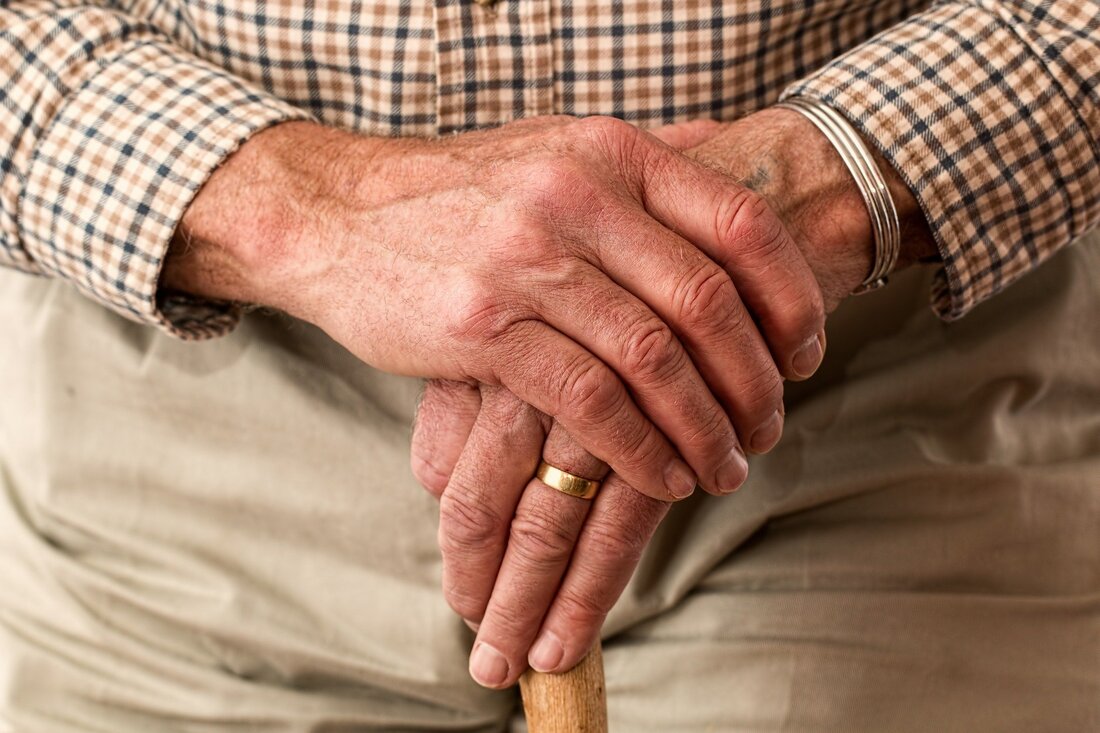|
|
Organizing for Alzheimer's Disease |
|
Alzheimer's Disease is an increasingly common brain disorder that results in memory loss. In addition to becoming forgetful, people with Alzheimer's Disease often misplace things, are easily confused, struggle with spacial awareness, and experience impaired reasoning or judgment. Any one of these symptoms on its own could create organizational challenges, both for the person experiencing them and anyone living with him or her. When combined, they become even more impactful on a person's (or family's) way of life.
Knowing the challenges a person with Alzheimer's Disease will face, it's possible to take certain measures to lessen the stress these challenges might create and make life easier for the patient and his or her family/care givers.
Knowing the challenges a person with Alzheimer's Disease will face, it's possible to take certain measures to lessen the stress these challenges might create and make life easier for the patient and his or her family/care givers.
This post contains affiliate links. Read my full disclosure here.
Declutter! |
|
Clutter is bad for a healthy brain. For one struggling with memory loss and confusion, it can be downright debilitating. The Royal Australian College of General Practitioners reports:
|
Vertical Divider
|
Bursting cupboards and piles of paper stacked around the house may seem harmless enough. But research shows disorganisation and clutter have a cumulative effect on our brains.
Our brains like order, and constant visual reminders of disorganisation drain our cognitive resources, reducing our ability to focus. The visual distraction of clutter increases cognitive overload and can reduce our working memory. |
Vertical Divider
|
With this in mind, decluttering should be a high priority for anyone whose parent or loved one has been diagnosed with Alzheimer's disease.
|
|
Decluttering and Dementia |
|
Generally speaking, I advise clients not to declutter other people's things. It can put a strain on relationships, and most of us have plenty of our own clutter to keep us busy in that department. That said, Alzheimer's patients and others suffering from a form of dementia, may not understand the need for decluttering or be capable of making the decisions that are inherently part of the process. This makes it necessary for family members to get involved.
It can be challenging to declutter the home of someone who doesn't understand what is happening and why. Your loved one is likely to question you repeatedly regarding your actions and motives. They will undoubtedly protest the removal of their things. They will not want their "order" to be disturbed. Their objections are likely to test both your patience and your resolve.
I'm not about to suggest that there is an easy way around any of this, but I hope the following suggestions will at least help make this task a little less stressful for you and your loved one:
It can be challenging to declutter the home of someone who doesn't understand what is happening and why. Your loved one is likely to question you repeatedly regarding your actions and motives. They will undoubtedly protest the removal of their things. They will not want their "order" to be disturbed. Their objections are likely to test both your patience and your resolve.
I'm not about to suggest that there is an easy way around any of this, but I hope the following suggestions will at least help make this task a little less stressful for you and your loved one:
- Explain what you're doing and why. Depending on the extent of their memory loss, they will likely forget some or all of what you tell them, so consider writing out the explanation as well. It will be less frustrating for you if you don't have to keep answering the same question, and they will have access to the answers they need.
- Involve them. It is, after all, their stuff. If they are reluctant to part with things you know they have absolutely no use for and no emotional attachment to, set the items aside to come back to later.
- Let kindness be your default setting. This is harder on them than anyone. Try to imagine what it would be like to have your world slipping away, to be confused and frustrated and uncertain.
- Resist the urge to make judgment statements like "Why do you even have this?" or "This is junk. You need to get rid of it." The more they feel their control diminishing, the more likely they are to cling to things that still have meaning, even if those things seem insignificant to everyone else.
- Try to guide them to conclusions by wording things in such a way that it leads them to the desired outcome, thus allowing them to feel a sense of ownership for the decision. Don't argue if they resist. Be someone they can trust.
- Start with the most frequently used spaces such as the bathroom or the kitchen and pair down to the things they use regularly.
- Think small. Break tasks down into small segments and focus on completing one segment at a time. Instead of the entire room, start with a closet. Within the closet, focus on one shelf or section.
- Remove things slowly. Your loved one is less likely to be troubled by the downsizing of their belongings if the visual evidence of their removal is gradual.
- Consider hiring a professional organizer. This is a traumatic time for everyone, and a professional can offer objective support and guidance.
Create a Safe Space |
|
Spacial awareness often becomes compromised in Alzheimer's patients, so it's important to make their space as easily navigable as possible. Clear the floor of all but furniture. Remove stacks or piles or containers that may be lying about.
Arrange furniture in such a way as to promote ease of movement. Avoid tight configurations. Leave plenty of space for passage from room to room. Make traffic ways as straight and wide as possible. Keep it simple. It may be necessary to remove some furniture items entirely in order to make the space safer.
Look for potential hazards around the home. If there is a step down/up from one room to another, mark the top and front edge of the step with brightly colored tape. Also look for sharp, protruding edges on furniture or other obstacles. If possible rearrange things so the edge is not protruding into the space. If not possible, find a way to pad the edge to prevent injury.
Read more about Home Safety and Alzheimer's Disease from the National Institute on Aging.
Arrange furniture in such a way as to promote ease of movement. Avoid tight configurations. Leave plenty of space for passage from room to room. Make traffic ways as straight and wide as possible. Keep it simple. It may be necessary to remove some furniture items entirely in order to make the space safer.
Look for potential hazards around the home. If there is a step down/up from one room to another, mark the top and front edge of the step with brightly colored tape. Also look for sharp, protruding edges on furniture or other obstacles. If possible rearrange things so the edge is not protruding into the space. If not possible, find a way to pad the edge to prevent injury.
Read more about Home Safety and Alzheimer's Disease from the National Institute on Aging.
Label Everything |
|
In an effort to minimize confusion and forgetfulness, I highly recommend labeling everything. This will help your loved one know where to find things and where to put them when they are finished using them.
Label the outside of cabinets with their contents. Then label individual shelves, or portions of shelves, within the cabinet. Label drawers. Label individual containers, particularly if the contents of the container might easily be confused with something else (such as sugar and salt). Label. Label. Label. The goal is to make it painfully obvious what is stored where.
Normally, I'm a fan of disposing of unnecessary packaging, but in this case it's probably best to leave some things in their original packaging so that it's easy to determine what an item is and how it is to be used.
Label the outside of cabinets with their contents. Then label individual shelves, or portions of shelves, within the cabinet. Label drawers. Label individual containers, particularly if the contents of the container might easily be confused with something else (such as sugar and salt). Label. Label. Label. The goal is to make it painfully obvious what is stored where.
Normally, I'm a fan of disposing of unnecessary packaging, but in this case it's probably best to leave some things in their original packaging so that it's easy to determine what an item is and how it is to be used.
Post Instructions |
|
In addition to labels, post instructions next to or directly on appliances. Make them simple but detailed. Include such things as TURN OFF THE BURNER ON THE STOVE. Assume that nothing is obvious or universally understood.
Any time you observe your loved one struggling to complete a task, consider creating a basic set of instructions for that task. Rather than being demeaning, these instructions will help the patient maintain a degree of independence and self-respect by allowing them to continue doing simple tasks for themselves.
Any time you observe your loved one struggling to complete a task, consider creating a basic set of instructions for that task. Rather than being demeaning, these instructions will help the patient maintain a degree of independence and self-respect by allowing them to continue doing simple tasks for themselves.
Post a Large Calendar |
|
To help your loved one keep track of the days and be aware of what's happening, post a large calendar such as this laminated dry erase version. Look for something durable and reusable with large spaces for individual days.
Create a Reminder Board |
|
In addition to basic annotations on the calendar, it's useful to post information about upcoming events. For instance, you might write Dr. Jarvis, 2 pm on a specific date on the calendar. On the reminder board, you could post a picture of Dr. Jarvis, what kind of doctor he is, and the purpose for the appointment.
Other information to post on the reminder board include names and contact information for important people such as service providers, home health care professionals, housekeepers, family members, neighbors, and others with whom the patient may interact regularly. Whenever possible, I suggest including a photo of the person with their information.
Emergency information is also a good thing to post in a prominent location. In addition to emergency contacts, it's useful to include information about the residence in case emergency services need to be contacted. A simple card with the address of the home, the home phone number if there is one, and basic directions from a main road.
I recommend using a magnetic dry erase board for your reminder board because it can be used both to write on and to post things.
Other information to post on the reminder board include names and contact information for important people such as service providers, home health care professionals, housekeepers, family members, neighbors, and others with whom the patient may interact regularly. Whenever possible, I suggest including a photo of the person with their information.
Emergency information is also a good thing to post in a prominent location. In addition to emergency contacts, it's useful to include information about the residence in case emergency services need to be contacted. A simple card with the address of the home, the home phone number if there is one, and basic directions from a main road.
I recommend using a magnetic dry erase board for your reminder board because it can be used both to write on and to post things.
Answer Common Questions |
|
If your loved one has a tendency to ask the same question repeatedly, consider typing up a loving, thorough response. Keep a small binder or notebook with the answers to commonly asked questions somewhere your loved one will know to look when they are feeling confused about something.
Utilize Family Photos |
|
To help the Alzheimer's patient maintain a working memory of people close to them, create a poster with pictures of close family members, their names, and their relationship to the patient. For a deeper connection, create a memory album with the above information, but include favorite memories from each individual and their interaction with the patient.
Alzheimer's Disease presents many challenges for both patients and their families. Some of these challenges can be met, or at least better managed, through organization. If you you have a loved one who has been diagnosed with Alzheimer's, I hope you found this page helpful. If you know someone whose struggling to provide care for an Alzheimer's patient, please share this with them. If you have had success creating an Alzheimer-friendly environment for someone in your life, please share your ideas in the comments section below.
Proudly powered by Weebly



